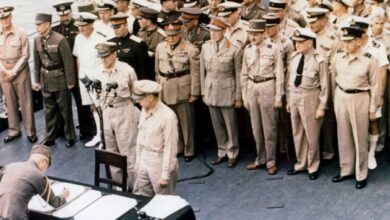What Is The Literary Definition Of Setting?

A good piece of fiction can make you feel like you’re actually in a different time and place. The author of the piece is able to pull off an almost believable atmosphere by carefully sprinkling their story with descriptors that create a vivid picture. In literary terms, setting is everything in your story that isn’t the characters or narration – and understanding those elements can help you construct the perfect atmosphere in your writing! In this article, I aim to provide you with an understanding of what the literary definition of setting is.
What is the Literary Definition of Setting?
Setting is the environment in which a story takes place. It can be a specific location, an era, or just a general atmosphere. The purpose of setting is to create a sense of place and to help the reader understand the characters and the story.
A good example of setting in literature is the description of Hogwarts in Harry Potter. Rowling creates an elaborate and well-developed world with unique rules and customs that make it feel like a real place. Other examples include J.D. Salinger’s Holden Caulfield, which takes place in New York City during the 1950s, or Toni Morrison’s Beloved, set in antebellum slavery in 1830s Mississippi.
Types of Settings in Literature
Settings are the locations in which a story takes place, and can be either physical or conceptual. They can be small, such as a single room in an apartment, or large, such as an entire city. Settings also play a role in how we understand the characters and the plot. For example, if a story is set in the present day, then the setting will inform us about the time period and cultural norms of the story’s world.
Physical settings can include the location of a story, such as a house or town; the time period in which it is set, such as the 1800s or present day; and the specific details of the environment, such as whether it is sunny or rainy outside. Psychological settings can include the characters’ emotions and thoughts, their relationships to each other, and their motivations.
You may also like;
- What is Japanese Kana?
- What To Know About The Greek Cypriots In Cyprus
- How Big is Mexico City?
- A Guide To The Sichuan Province
Frequently Asked Questions on the Literary Definition Of Setting
What is an example of a literary setting?
A setting in literature is a specific place and time in which the action of the story takes place. It can be as simple as a room in a house, or it can be as complex as an entire country or world. Settings can also include objects, characters, and themes. A good example of a setting in literature is the fictional town of Derry in Stephen King’s novel “The Shining.”
What is the definition and example of setting?
Setting is the spatial, temporal, and emotional context of a story. It can be described in many ways, but the most common is to say that it provides a “stage” on which the action unfolds.
One of the best examples of setting is J.D. Salinger’s The Catcher in The Rye. The novel is set primarily around New York City in 1951, and Salinger does an amazing job of providing specific details about locations like The Plaza Hotel and Times Square.
What is the setting of the story?
The setting of a story is the physical and temporal location in which the events described take place. In addition, it can also encompass the social, political and cultural context within which the story occurs.
Some common elements of setting include:
-Time period: The time period in which the story takes place can affect the culture, politics and technology of the world.
-Location: The geographical location of the story may be important for plot purposes or to create a sense of atmosphere.
-Character: The characters in a story also have an impact on the setting. For example, a rural town may have different values than a big city.
Conclusion
Setting is one of the most important elements of any story. It’s what allows the reader to get lost in the world that the author has created, and it can create a sense of realism that draws them in even further. In this article, I aim to provide you with an understanding of what setting is and how it can be used to enhance your writing. Hopefully, by now you have a better idea of what makes for good setting and how you can use it to your advantage when crafting your next story.
Last Updated 3 years by










